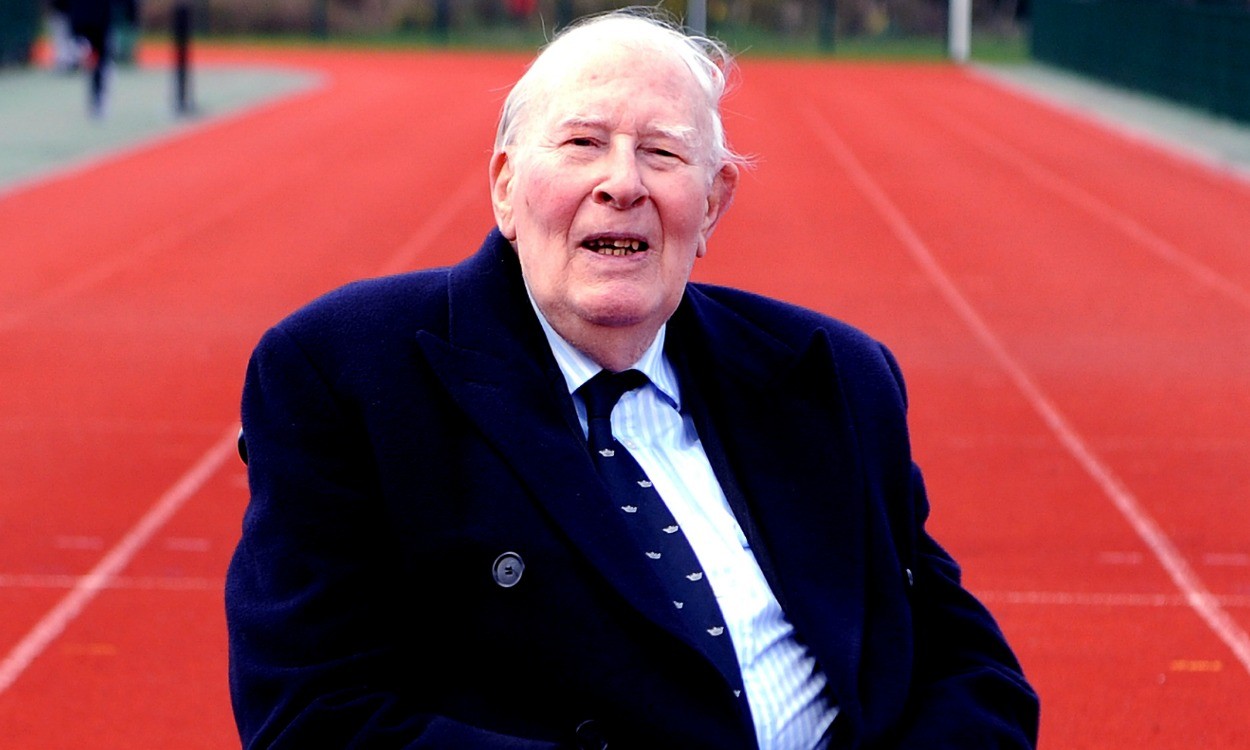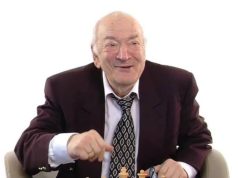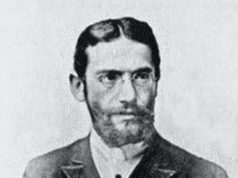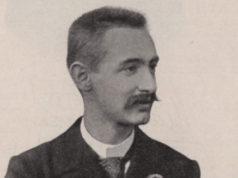64 years on, 3:59.4 is a number recognisable to every athletics folower. And the man who created it had assured a name in the history book. Sir Roger Bannister, the first man to run a mile in under four minutes, has died aged 88 in his hometown in Oxford. “Sir Roger Bannister, died peacefully in Oxford on 3rd March 2018, aged 88, surrounded by his family who were as loved by him, as he was loved by them,” his family released a statement.
International Association of Athletics Federations (IAAF) President Lord Coe, who ran a mile world record of 3:47.33 in 1981, said: “This is a day of intense sadness both for our nation and for all of us in athletics. There is not a single athlete of my generation who was not inspired by Roger and his achievements both on and off the track.”
6th MAY 1954
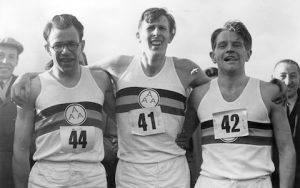
It was a windy spring evening in Oxford. A medical student at that time, Bannister, after working in a hospital that morning almost decided not to travel to the Iffley Road track for the race because of high winds. However his coach, Franz Stampfl, convinced him, “If you pass it up today you may never forgive yourself for the rest of your life.”
Bannister decided to compete just 30 minutes prior to the race. His pacemakers Chris Brasher, winner of an Olympic gold medal in the steeplechase two years later and Chris Chataway, the record-holder in 5000m, were getting a little impatient and they were the ones who asked him to make up his mind. “It was I who had to do it. I was very concerned about the weather but when the wind dropped it proved just possible,” as was revealed by Bannister to Sean Ingle of The Guardian while celebrating the 60th anniversary of his record achievement in 2014.
His first pacemaker, Brasher, made a false start. Bannister felt anger but Basher was fast enough. He led for a metronomic two laps, Chataway for the next one, and a bit more. Bannister, needed to run the final quarter-mile in 59 seconds. The record appeared to be slipping away but he hurled his body across the line in a desperate bid to make history.
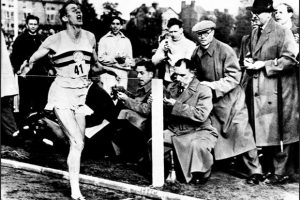
As is scripted in The Guardian- “He collapsed at the finish, and revived to hear another friend, the statistician Norris McWhirter, announce over the public address: “a track record, English Native record, British National, British All-Comers, European, British Empire and World record; the time: three …” (the rest drowned out by cheering) “… minutes, 59.4 seconds.”
Roger Bannister’s record was assumed to be of superhuman magnitude. Runners from different countries tried to lower the time than what was set by Gunder Hägg of Sweden. In 1945, Hägg timed 4:1.4sec set in 1945. In the USA, Wes Santee clocked 4:2.4sec. In Australia, John Landy ran four separate races in and around 4:2sec. Bannister himself broke the British record in Oxford with 4:3.6sec.
Roger Bannister knew that it was his best chance to run within that magical timing and he achieved it. His performance was more remarkable as he had to skip his medical lectures and practice for only 45 minutes everyday at lunchtime. But his record lasted only six weeks before the Australian John Landy lowered it by more than a second. At Turku in Finland, Landy posted an astounding 3:58sec and thus, set the ‘Mile of the Century’ run that was going to take place between him and Bannister at the British Empire Games (Commonwealth Games was so called at that time) in Vancouver.
MILE OF THE CENTURY
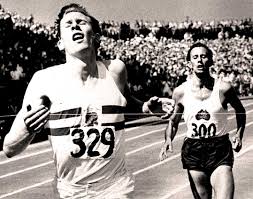
The two milers arrived in Canada in late 1954 to a huge crowd waiting for a miracle race. And, as expected, they produced one of the great confrontations in the sport’s history. Landy led from the starting line and increased his lead in the first two laps. Then gradually, halfway through the third lap, Bannister pulled himself up to reduce the gap tighter and tighter. As the finishing line was visible, Bannister threw himself past Landy’s right shoulder. Landy glanced over his left, lost concentration and the Miracle Mile went to Sir Roger Bannister. “I felt it was a piece of unfinished business to be able to reproduce the performance of my sub-four-minute mile in a race. And I ran the final lap in the last race I had in England beforehand in 53 seconds to persuade Landy that his best chance was to run me off my feet,” as Bannister quoted in The Guardian.
Bannister ran for the last time in the European 1500 metres at Berne in Switzerland. He became the first Brit to win a gold medal. And that was it. He left his athletic career to pursue a satisfying medicine career.
EARLY LIFE
The great man like whom no one can ever come, was born at Harrow in England to Ralph and Alice Bannister. His father was a simple worker from Lancashire who moved to London as a clerk in the civil service. It was a tumultuous time due to the Second World War and the family had to move to and fro London. In this milieu, Roger played games at the University College School, at Hampstead where he was pursuing his high-school studies.
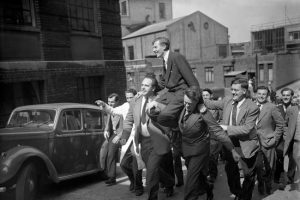
A brilliant student, he sat his university entrance exams just at the age of 16. He passed out in flying colours and also won a scholarship to begin medical studies at Exeter College, Oxford. He took a BA in physiology before moving to St Mary’s Hospital in London, for his clinical studies.
At Oxford, Bannister was much loved and was elected president of the university athletic club. With his administrative power, he re-introduced the athletics matches between joint teams from Oxford and Cambridge. Moreover he was the man behind the opening of Iffley Road track where he was destined to accomplish one of the greatest achievement of sporting history.
Bannister had established himself as the best 1500m runner in Britain by 1950. He was also the favourite for winning the 1500m race at 1952 Helsinki Olympics. However, he could not control his nerves and finished a disappointing fourth.
But that was for good as Bannister himself had disclosed that if he had won his gold medal at Helsinki there was every chance that he would have retired from athletics there and then. But he decided to stay on for some more time as the under-4 minute concept was there in the back of his mind.
POST RETIREMENT
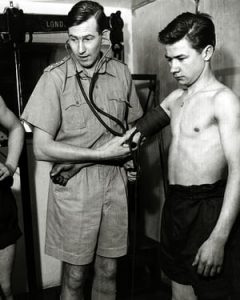
In 1955, he got his medical degrees of BM BCh and did his house physician and house surgeon jobs for two years. From 1957 to 1959 he worked at the army hospital in Millbank, London, looking after senior officers. This was out of his urge to do national service that he had delayed till he passed the exams to obtain membership of the Royal College of Physicians.
After leaving army, he started his training in neurology as a registrar at the National Hospital for Neurology and Neurosurgery in London. He travelled to Harvard University for fellowship research. On his return, he was appointed consultant neurologist at the Western Ophthalmic Hospital and St Mary’s Hospital in London and thus began a very successful neurological career.
Sir Roger Bannister returned to his very own Iffley Road track, now named after him, in 2012, bearing the Olympic torch. But in 2014 he revealed that he was suffering from Parkinson’s disease. “I am being well looked after and I don’t intend to let it interfere — as much as I can. It’s in the nature of things, there’s a gentle irony to it.” he told the BBC in 2014.
Honours
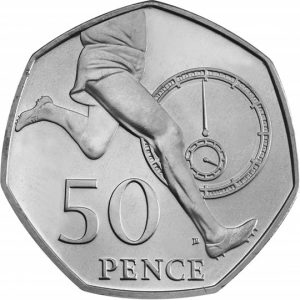
Half a century later, after breaking the record, the Royal Mint of Britain issued a 50 pence coin showing an athlete’s running legs against a stopwatch to honour Bannister’s achievement. His famous black-leather pair of shoes that he wore on that eventful day was sold for 266,500 pound in September 2015.
But despite being famed for breaking the four-minute barrier, Bannister said he felt a greater sense of achievement winning gold at the 1954 Commonwealth Games. “I think that racing in the Olympics and Commonwealths is more important than breaking records. Vancouver was the pinnacle of my athletics career. It is very difficult to break records during Olympic competition, but winning races was better than holding world records,” he told BBC.

